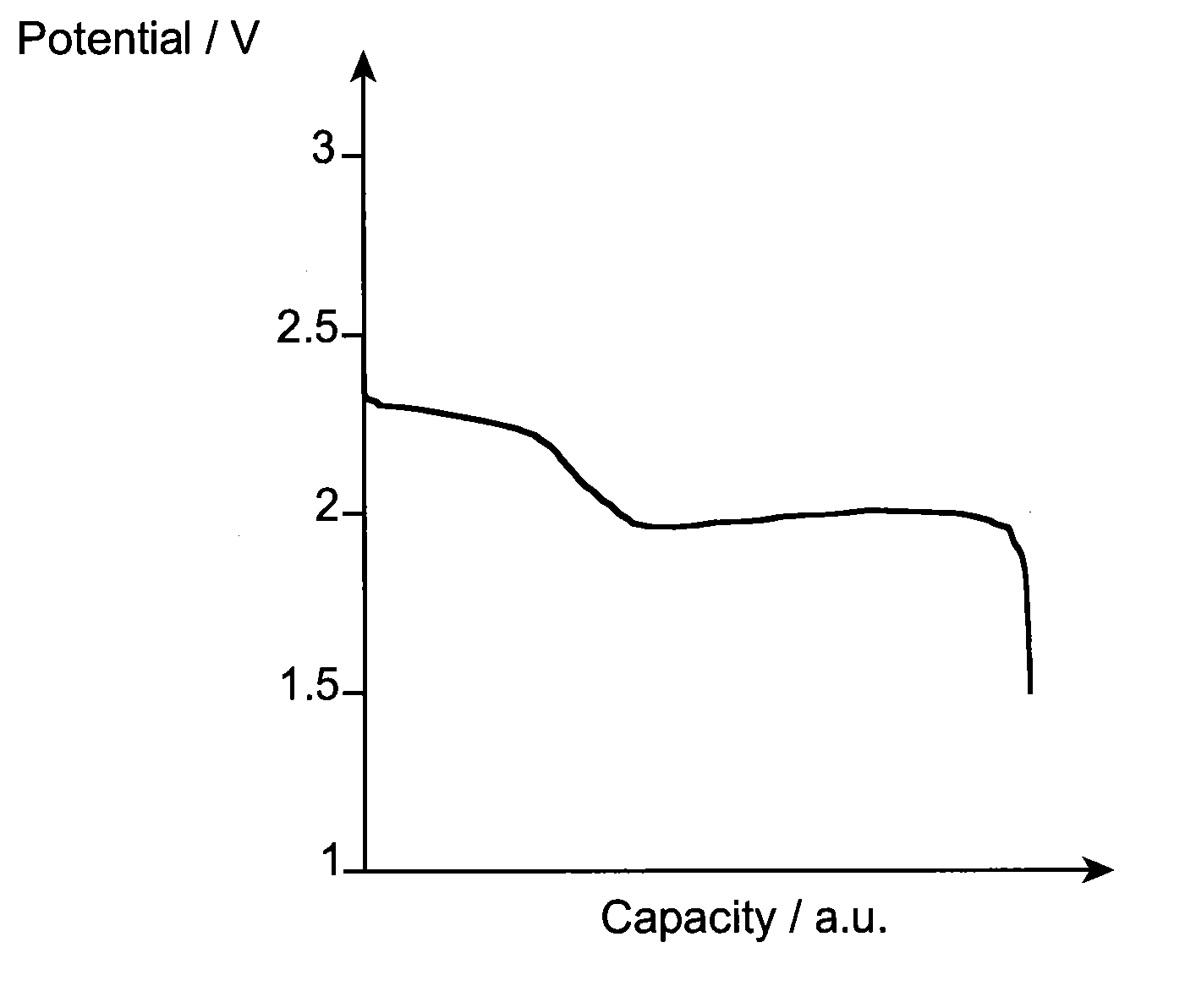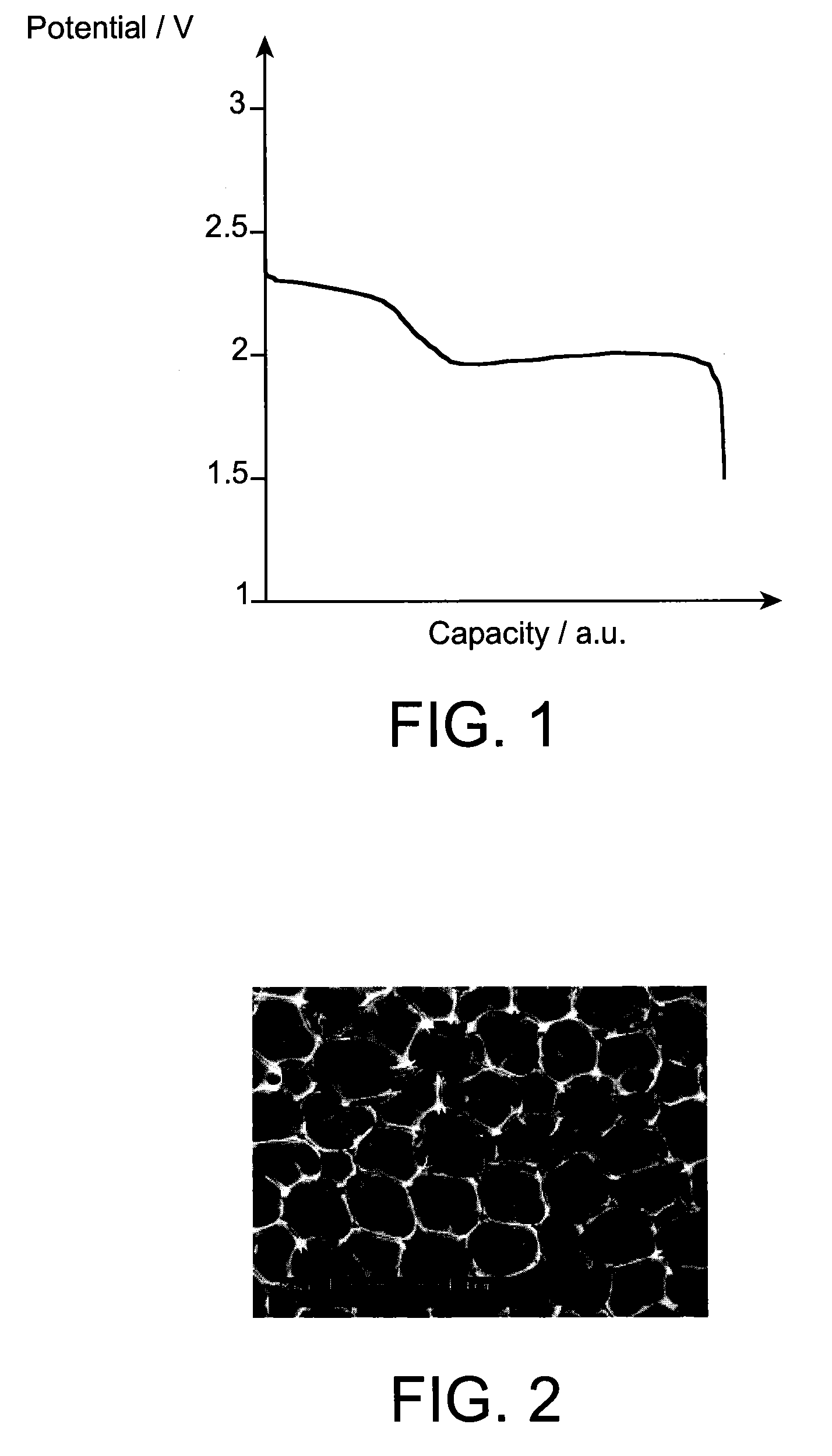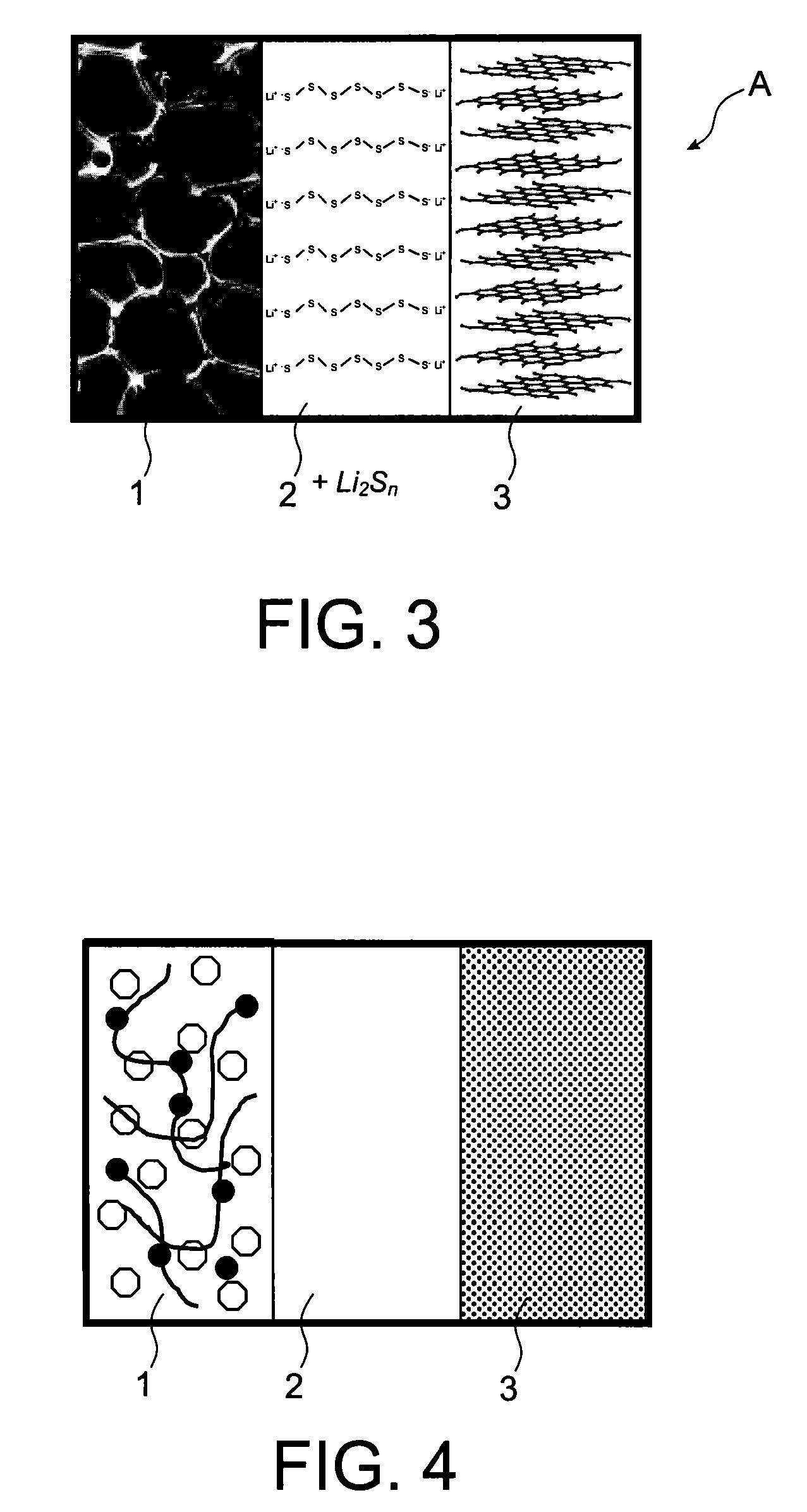Lithium-sulphur (Li-S)-type electrochemical battery and production method thereof
a technology of electrochemical batteries and sulphur, which is applied in the direction of non-aqueous electrolyte cells, cell components, sustainable manufacturing/processing, etc., can solve the problems of low self-discharge of batteries, long life (500, or even 1000 cycles), and sulphur is soluble in the envisaged organic electrolytes
- Summary
- Abstract
- Description
- Claims
- Application Information
AI Technical Summary
Benefits of technology
Problems solved by technology
Method used
Image
Examples
embodiment examples 1 to 4
According to the Invention
example 1
[0081]A sulphur containing electrolyte is made from:[0082]bis(trifluoromethanesulphonyl)imide lithium salt (LiTFSI, marketed by the firm Aldrich);[0083]1,3-dioxolane solvent (DIOX, marketed by the firm Aldrich);[0084]tetraethylene glycol dimethyl ether solvent (TEGDME, marketed by the firm Aldrich);[0085]lithium polysulphides Li2S8.
[0086]Said lithium polysulphides are dissolved beforehand at 1 mol·L−1 in TEGDME. Elementary sulphur and lithium metal are dispersed in the solvent to obtain stoichiometry in Li2S8. After a certain heating and stirring time, all of the material has dissolved and reacted to give a viscous, brown coloured solution.
[0087]The electrolyte is then made of mol·L−1 of LiTFSI, 50% by volume of 1 mol·L−1 of Li2S8 in solution in TEGDME and 50% by volume of DIOX. In the end, the compositions are thus the following:[0088]LiTFSI: 1 mol·L−1 [0089]Li2S8: 0.5 mol·L−1 [0090]TEGDME / DIOX: 50 / 50 in volume percent.
[0091]A battery A according to the invention of “button cell” t...
example 2
[0095]A sulphur containing electrolyte is made from:[0096]bis(trifluoromethanesulphonyl)imide lithium salt (LiTFSI, marketed by the firm Aldrich);[0097]1,3-dioxolane solvent (DIOX, marketed by the firm Aldrich);[0098]polyethylene glycol dimethyl ether solvent (PEGDME, marketed by the firm Aldrich);[0099]lithium polysulphides Li2S8.
[0100]Said lithium polysulphides are dissolved beforehand at 1 mol·L−1 in PEGDME. Elementary sulphur and lithium metal are dispersed in the solvent to obtain stoichiometry in Li2S8. After a certain heating and stirring time, all of the material has dissolved and reacted to give a viscous, brown coloured solution.
[0101]The electrolyte is then made of 1 mol·L−1 of LiTFSI, 50% by volume of 1 mol·L−1 of Li2S8 in solution in PEGDME and 50% by volume of DIOX. In the end, the compositions are thus:[0102]LiTFSI: 1 mol·L−1;[0103]Li2S8: 0.5 mol·L−1;[0104]PEGDME / DIOX: 50 / 50 in volume percent.
[0105]A battery A according to the invention of “button cell” type, typicall...
PUM
| Property | Measurement | Unit |
|---|---|---|
| rated voltage | aaaaa | aaaaa |
| mass energy densities | aaaaa | aaaaa |
| porosity | aaaaa | aaaaa |
Abstract
Description
Claims
Application Information
 Login to View More
Login to View More - R&D
- Intellectual Property
- Life Sciences
- Materials
- Tech Scout
- Unparalleled Data Quality
- Higher Quality Content
- 60% Fewer Hallucinations
Browse by: Latest US Patents, China's latest patents, Technical Efficacy Thesaurus, Application Domain, Technology Topic, Popular Technical Reports.
© 2025 PatSnap. All rights reserved.Legal|Privacy policy|Modern Slavery Act Transparency Statement|Sitemap|About US| Contact US: help@patsnap.com



